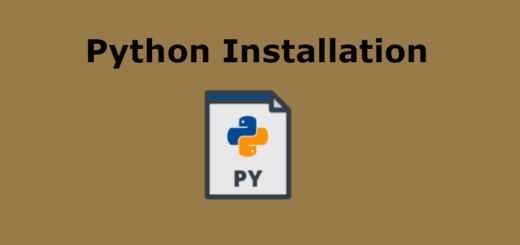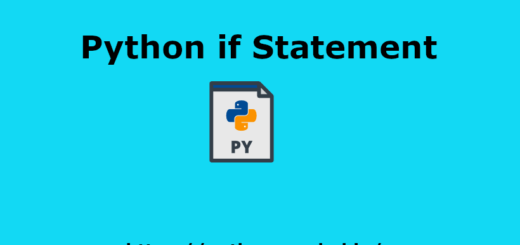Python Boolean
In Python, a boolean is a built-in data type that represents one of two possible values: True or False. Booleans are commonly used for logical operations and control flow in programming.
Here are some key points about booleans in Python:
1. The values True and False are case-sensitive. It must be capitalized exactly as shown here, with the first letter capitalized.
2. Booleans are typically the result of a comparison or logical operation. For example, the expression 2 > 1 evaluates to True, while 2 < 1 evaluates to False.
3. Booleans can also be assigned to variables. For instance:
|
1 2 |
x = True y = False |
4. Boolean values are often used in conditional statements, such as if statements, to determine the flow of the program based on certain conditions. For example:
|
1 2 3 4 |
if x: # Do something if x is True else: # Do something else if x is False |
5. Boolean operators, such as and, or, and not, can be used to combine or negate boolean values. These operators allow you to perform logical operations on booleans. For example:
|
1 2 3 |
a = True b = False result = a and b # result is False |
6. Many built-in functions and methods in Python return boolean values. For instance, the isinstance() function can be used to check if a variable belongs to a specific data type:
|
1 2 |
x = 5 print(isinstance(x, int)) # True |
7. In addition to True and False, boolean values can also be represented by integers. 1 represents True, and 0 represents False.
The bool() function
The bool() function in Python is a built-in function that allows you to convert a value into a boolean representation. It takes an argument and returns True or False based on the truthiness of the argument.
Here are a few things to keep in mind about the bool() function:
- The
bool()function can take any object as an argument and returns its boolean representation. The boolean value returned depends on the truthiness of the object. - The truthiness of an object is determined based on its inherent value or properties. Python has specific rules for determining the truthiness of different types of objects.
- Here are some general guidelines for determining the truthiness of common objects:
- Numeric values: Zero values (
0,0.0,0j) are consideredFalse, while non-zero values are consideredTrue. - Strings: An empty string (
"") is consideredFalse, while non-empty strings are consideredTrue. - Lists, tuples, and other sequences: Empty sequences (
[],(), etc.) are consideredFalse, while non-empty sequences are consideredTrue. - Dictionaries: Empty dictionaries (
{}) are consideredFalse, while non-empty dictionaries are consideredTrue. NoneandFalseare consideredFalse, while any other value is consideredTrue.
- Numeric values: Zero values (
- Here are a few examples of using the
bool()function:
|
1 2 3 4 5 6 7 |
print(bool(0)) # False print(bool(10)) # True print(bool("")) # False print(bool("hello")) # True print(bool([])) # False print(bool([1, 2])) # True print(bool(None)) # False |
5. The bool() function is often used in conditional statements or when you need to explicitly convert a value into a boolean representation.
Overall, the bool() function is a useful tool for converting values into their boolean counterparts, allowing you to perform logical operations and control flow based on their truthiness.
Falsy and Truthy values
In Python, there are certain values that are considered falsy or truthy when evaluated in a boolean context. These values determine the truthiness or falsiness of an expression or object when used in conditional statements, logical operations, or with the bool() function.
Falsy values:
The following values are considered falsy, meaning they evaluate to False in a boolean context:
False: The boolean valueFalseitself.None: The null object.- Numeric zero values:
0,0.0,0j(complex number with zero real and imaginary parts). - Empty sequences: An empty string
"", an empty list[], an empty tuple(), an empty dictionary{}, an empty setset(). - The special value
NaN(Not a Number) when working with floats.
Truthy values:
All other values that are not listed in the falsy values are considered truthy, meaning they evaluate to True in a boolean context. Here are some examples:
True: The boolean valueTrueitself.- Non-zero numeric values: Any non-zero integer, float, or complex number.
- Non-empty sequences: A non-empty string, list, tuple, dictionary, or set.
- Objects: Instances of custom classes, even if they don’t explicitly define a
__bool__or__len__method. - Special values: Certain objects like file objects, which are considered truthy.
Here are a few examples to illustrate the concept of falsy and truthy values:
|
1 2 3 4 5 6 7 8 9 10 |
print(bool(False)) # False print(bool(None)) # False print(bool(0)) # False print(bool("")) # False print(bool([])) # False print(bool(True)) # True print(bool(10)) # True print(bool("hello"))# True print(bool([1, 2])) # True |



